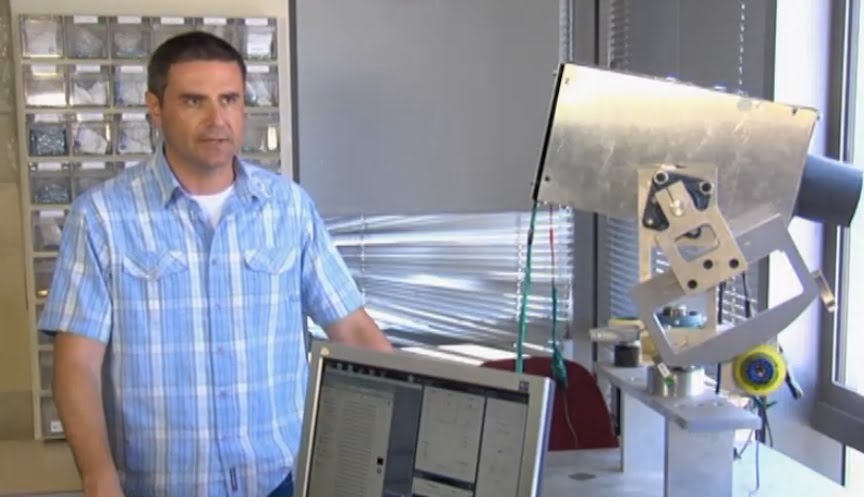A device developed by an Israeli scientist can pick up conversations from hundreds of feet away without a microphone. “Using a laser beam with a camera, we can detect the voice wave patterns of the sounds that a person makes when they are talking,” says Bar-Ilan University Professor Zev Zalevsky, who helped design the system. “We take these wave patterns and translate them back into voice, and thus can interpret what was said from even a long distance away.”
The system is the latest use for a technology and device Zalevsky designed in 2011 together with Javier Garcia of the University of Valencia in Spain. Called the Opto-Phone, the device was designed to gather medical data about an individual, allowing doctors to read heartbeat, blood pressure or blood glucose levels from 100 meters away. With the latest tweaks to the Opto-Phone, Zalevsky told Channel 2 Tuesday night, the device can now detect voice wave patterns from up to 400 meters (about 1,200 feet) away. This makes it the perfect tool not only for “long-distance” medical diagnosis, but for long-distance eavesdropping, as well.
Related articles:
- SCiO: This Unbelievable Device Will Change The Way We Interact With The World
- Tel Aviv Researchers Find New Way To Fight Ovarian Cancer
Using a laser beam, an advanced camera and sensors, the Opto-Phone uses nano-photonics to detect movement on the surface of the body. This movement creates a “speckle pattern,” which can be read by the Opto-Phone. By analyzing this pattern, the system can “hear” the number of heartbeats in a person’s body, the rush of blood in the bloodstream and voice wave patterns as they bounce off two people engaged in a conversation. The technology is so precise, Zalevsky said, “we can differentiate between different people based on their position,” listening in on whatever they are involved in, Zalevsky told the Times of Israel.
Zalevsky, who is director of the electro-optics study program at Bar Ilan’s faculty of engineering and director of the Nano Photonics Center at the Institute of Nanotechnology and Advanced Materials (BINA), is one of Israel’s most prolific inventors. Among the many devices he has developed is an endoscope suitable for injection into the bloodstream. The average endoscope, at 3 millimeters in diameter, is too large for many applications, such as examining blood vessels or organs. Most endoscopes can be used for either examination or treatment, but not both. “Our endoscope is 900 times smaller than the standard ones and offers much better resolution,” he said.
This article was first published on The Times of Israel and was re-posted with permission. To continue reading this article on the TOI site, click here.
Related posts

Editors’ & Readers’ Choice: 10 Favorite NoCamels Articles

Forward Facing: What Does The Future Hold For Israeli High-Tech?

Impact Innovation: Israeli Startups That Could Shape Our Future




Facebook comments